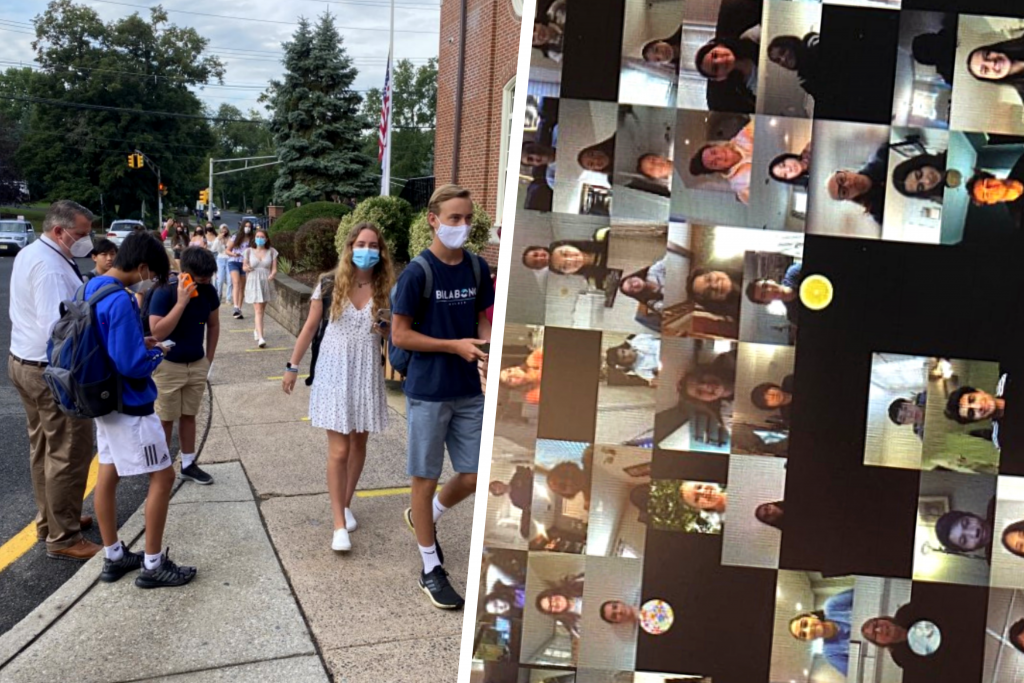With the pandemic still spreading without any sign of stopping, there is one question on many people’s minds: is sending students back to school a wise choice? This has been an ongoing question in Ridgewood as well, with schools in the district implementing a hybrid learning model to alleviate some of the risks of in-person learning as well as improve the quality of education that people receive. However, this is not the right approach to the current situation, and the district is far better off utilizing a remote-only model. It is not possible to ensure a learning environment that is both safe and efficient.
First, the obvious problem of COVID-19 transmission must be addressed. By allowing students to attend school, the risk of infection is increased to an unknown degree. The Washington Post stated that “hybrid school plans make it easier for the virus to transmit into schools, simply by producing more links between schools and families along which the virus can travel.” There has already been an RHS student who tested positive. Although there was no exposure within the RHS building, the virus could have still spread to other players and their families, who are at a greater risk of developing severe symptoms because of their age. This may not seem like a big deal since children are less likely to develop symptoms from COVID-19, but this is not synonymous with a lower infection rate. According to a study by The Lancet, “…children are at a similar risk of infection to the general population,” which means that students are just as likely to be carriers as adults. The fact that children have milder symptoms may actually be a double-edged sword too, because it will be harder to identify who actually has COVID-19, which is essential to ensuring that it is safe to learn in-person.
Another problem that arises is the gap in the quality of learning between students following the hybrid and remote learning models. People who decide to learn remotely are at a disadvantage, because they do not get the hands-on experience and direct guidance from teachers that hybrid students are able to receive. As a remote student myself, it has been very hard for me to keep up with some of the material when I am not physically in the classroom. It’s also more difficult for me and other remote students to actively participate and engage with hybrid students because of the technology barrier, resulting in me feeling very disconnected from what the class was doing. Remote learning is also extremely challenging for neurodiverse students. As one RHS student puts it, “I’m considered neurodiverse because I have ADHD and sometimes having virtual schooling can make it really hard to stay focused, more so than in-person schooling.” From what has been said, it sounds like hybrid learning may seem much better than remote learning, but with its benefits, hybrid learning is very dangerous and carries much risk, so that must be heavily considered.
The situation with the state of education is undoubtedly a complicated one. People who decide to go remote are making a wise choice, but in the process they are forced to give up a high-quality education. On the other hand, students who use the hybrid-learning model are at risk of infection, which would be detrimental to their families. It would be wiser to switch to remote-learning entirely so that it would be easier for the district to sort out problems with that model without the complication of organizing both hybrid and remote learning. Students would be able to engage with their peers much more regularly since they are all using their devices, rather than being unable to converse with them when a portion of the class is attending in-person. Overall, schooling under Phase I is not the best way to educate students, and it would be far more beneficial to adjust it so that no students are left behind.
Tiffany Chang
Staff Writer
Graphic: Logan Richman

